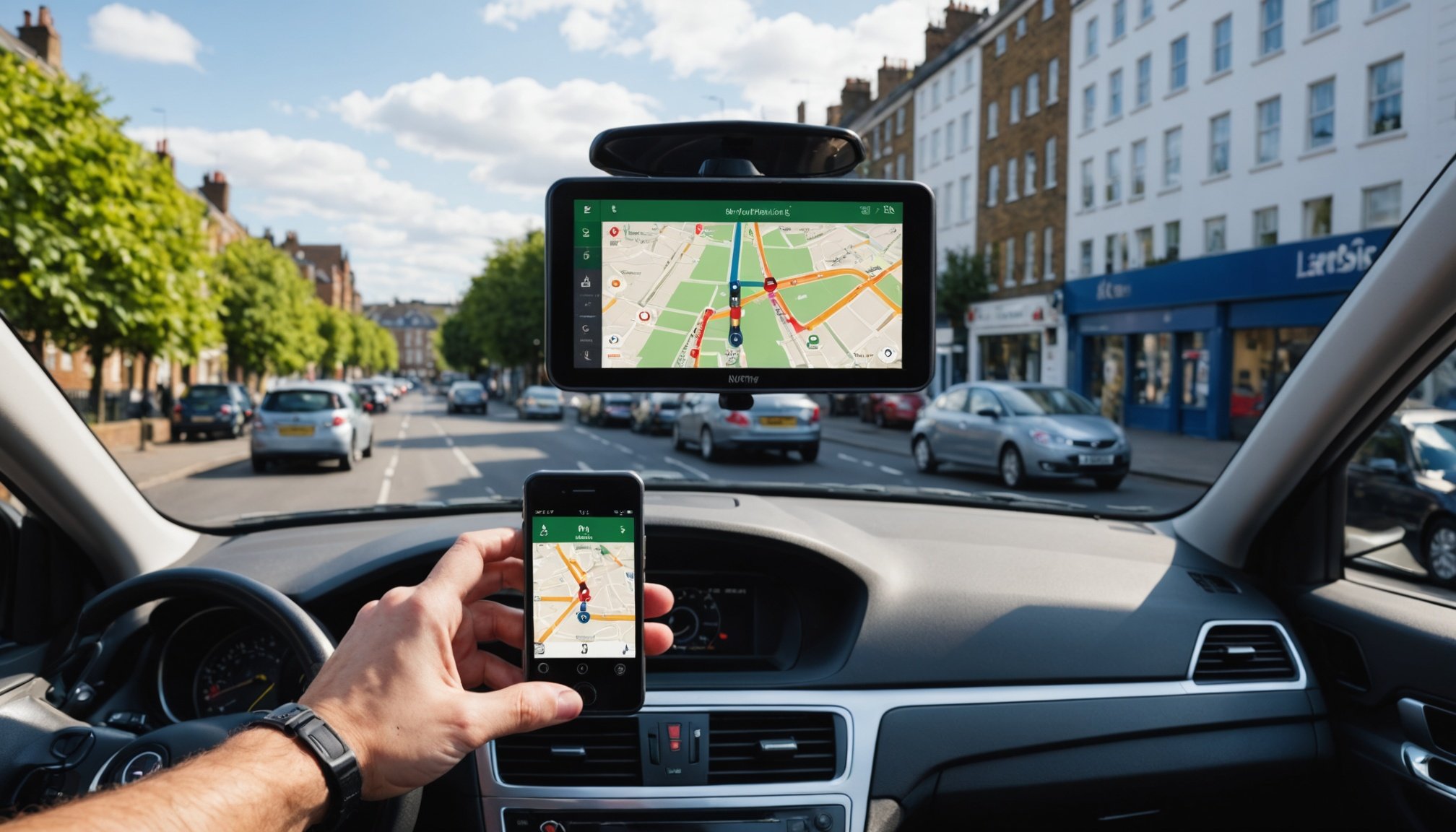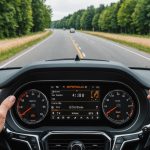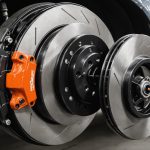Essential Navigation Features for UK Drivers
Commuting in the UK, particularly within bustling urban areas, necessitates robust navigation systems that meet specific key attributes crucial for UK driver navigation. Delving into these core features can significantly enhance both the driving experience and safety levels.
Real-time Traffic Updates
Understanding real-time traffic updates is vital for tackling congestion and avoiding unexpected delays. Systems providing live traffic data functionality empower drivers with up-to-the-minute insights, allowing for smarter decisions during their commute.
Have you seen this : Essential considerations for transitioning your classic car to a hybrid system in the uk
Benefits of Real-time Traffic Information
The immediate benefit is an improvement in journey times by avoiding congested routes. Real-time updates can also aid in time-sensitive situations, significantly reducing the stress associated with time delays.
Examples of Systems Providing Live Updates
Popular navigation systems, for instance, Google Maps, integrate live traffic data functionality. Such systems are equipped to provide alerts on accidents, road closures, and real-time detours.
In parallel : Demystifying car insurance in the uk: key differences between electric and petrol vehicles
How to Utilize Traffic Updates Effectively
To leverage these updates efficiently, regularly engage with your navigation app prior to departure and during your journey. Pre-plan your route with the latest real-time traffic updates to ensure seamless travel experiences within UK cities. Integrating these practices promises smoother, more efficient commutes, drastically cutting down on travel times.
Route Optimization Techniques
Smooth, stress-free commutes hinge on efficient route planning methods. A well-optimized route can substantially decrease travel time, fuel consumption, and frustration, especially within crowded urban landscapes like those in the UK.
Overview of Route Optimization Functions
Effectively planned routes streamline your journey, capitalising on route optimization functions. These functions typically consider real-time traffic conditions, historical traffic data, and road types to generate the most efficient pathways. Adopting these tools allows a driver to preemptively circumvent potential delays.
Practical Examples of Route Optimization in Action
Imagine receiving a notification recommending an alternative path due to unforeseen roadblocks or peak traffic hours. By rerouting through less-congested areas, quality route optimization functions adapt to changing conditions instantly, keeping you on track.
Factors to Consider for Optimal Routing
To leverage the full potential of efficient route planning methods, there are crucial elements to factor in. These include traffic patterns, roadworks, weather conditions, and even time of day. By inputting this data, navigation systems refine routing suggestions, enabling a safer and speedier journey. Thus, implementing advanced routing ensures your navigation system responds dynamically, mitigating common commuting headaches.
User-friendly Interface Features
Navigating city streets with ease hinges significantly on a navigation app’s usability. The design and functionality of these systems are vital for ensuring stress-free commuting, allowing drivers to access information swiftly and effortlessly. A well-crafted interface can significantly reduce potential distractions, enhancing both safety and efficiency on the road.
Importance of Design and Functionality
A user-friendly interface has an intuitive layout, clear instructions, and easy-to-read graphics. These elements ensure drivers can focus on the road while receiving pertinent information. Systems with cluttered or confusing designs may compromise user experience, leading to frustration and increased error likelihood.
Comparison of Interfaces from Various Navigation Systems
Comparing interfaces highlights how different navigation systems prioritize app usability. For example, some might offer seamless voice commands, while others excel with detailed on-screen instructions. Evaluations based on user feedback can illuminate which features are most beneficial for daily UK commutes.
Tips for Choosing a User-friendly Navigation App
When selecting a navigation app, consider the ease of use, clarity of graphics, and integration of essential features like real-time updates. Test different systems to find one that aligns with your driving habits. A responsive, intuitive design can transform your daily commute into a more manageable experience.
Common Urban Driving Scenarios
Navigating UK cities brings unique challenges, particularly when facing city driving challenges and navigation solutions. Everyday obstacles such as traffic congestion, complex road layouts, and sudden detours demand adaptive navigation systems.
Typical Challenges Faced by UK Drivers in Cities
UK urban areas are notorious for traffic congestion, intricate one-way systems, and limited parking. Drivers must often make quick decisions, navigating around unexpected obstacles like roadworks or special events. These scenarios intensify during peak hours, where efficiency and patience are severely tested.
How Navigation Systems Can Address These Challenges
Advanced navigation systems combat these challenges by leveraging live traffic data functionality and route optimization functions. Systems offering real-time updates highlight alternative routes, reducing stress and cutting journey times. Additionally, some apps offer exposure to lesser-known streets, avoiding main roads typically jammed with traffic.
Case Studies of Successful Navigation Usage in Urban Areas
Several cities have seen drivers benefit significantly from robust navigation systems. For example, in London, using systems with real-time traffic updates has allowed drivers to bypass heavy congestion zones during rush hour. Similarly, in Manchester, real-world analysis shows that integrating traffic data can lead to smoother commutes and enhanced travel safety. These examples underline that informed navigation practices can effectively tackle urban driving complexities.
Recommendations for UK Cities
Effective navigation plays a pivotal role in tackling urban driving challenges across the UK. It is vital to explore the best navigation systems for UK urban driving to minimize stress and ensure timely commutes. These tools, enhanced by technological advances, are indispensable for efficient manoeuvring within bustling city zones.
Overview of Top-rated Navigation Systems
Top options, such as Waze and Google Maps, are renowned for their robust features including real-time traffic updates and seamless route recalibration. Their ability to consistently deliver accurate live traffic data helps drivers navigate the complexities of UK urban roads with unmatched precision.
User Reviews and Comparisons of Popular Apps
Many users endorse these systems for their user-friendly interfaces and the accuracy of navigation insights. Through the voice-enabled controls and detailed maps, apps score high on usability metrics. User feedback often highlights the stress-reducing impact these systems bring to everyday journeys.
Tailored Recommendations for Specific UK Cities
A focused approach can significantly enhance navigation success. For instance, Waze’s community-driven alerts are particularly effective in cities like London, offering real-time information exclusive to local areas. Additionally, Google Maps excels in Manchester with precise warnings on road works and congestion. Such tailored recommendations are crucial for optimising urban commuting.
Essential Navigation Features for UK Drivers
Navigating through UK urban environments is greatly influenced by the key attributes of modern navigation systems. These attributes not only enhance driving efficiency but also significantly improve safety standards.
Overview of the Importance of Navigation Systems in Urban Commuting
Urban commuters rely heavily on advanced navigation systems to tackle the complexities of city driving. These systems are more than digital maps; they act as real-time consultants. Access to live traffic data functionality is a crucial element, enabling users to dodge heftily congested roads. Paired with features like efficient route planning methods, these systems dynamically adjust routes for optimal performance.
The influence of these technologies extends beyond mere convenience. Real-time updates reduce the stress associated with unpredictable traffic, simultaneously enhancing punctuality. In high-density UK locales, mastering these tools doesn’t just save time—it’s instrumental in promoting a safer driving experience by minimising the likelihood of last-minute manoeuvres typically necessitated by unexpected delays.
Ultimately, these systems are vital for UK drivers navigating urban corridors. Advanced functionalities, which continually inform the driver of current road conditions, pave the way for smoother, less stressful commutes. By embracing these features, drivers can effectively mitigate common challenges associated with urban driving.











